Green Day is one of the most popular bands to ever hit the stage. Their popularity continues today with music fans and beginner guitar players who find their songs easy to play. Most Green Day songs use only power chords so they’re easy to get a handle on.
However, many of their tracks use sophisticated arrangements and effects in addition to great songwriting which explains why the band has been as successful as they are. “Boulevard of Broken Dreams” is a great example of this, especially the tremolo guitar riff.
To play the introduction to “Boulevard of Broken Dreams,” you need a distorted guitar with a tremolo pedal with the rate set to 1/16″ notes, the depth (also called the intensity) close to maximum, and the sinewave setting set to square-wave. This will give you the staccato distorted guitar effect.
There are a few other things worth exploring in more detail to get your tone closer to what Billie Joe Armstong has on that iconic song, including the distortion, which we’ll also talk about in the next section. This article will be a general overview of how to get the sound.
What Gear You Need For The “Boulevard of Broken Dreams” Guitar Tone
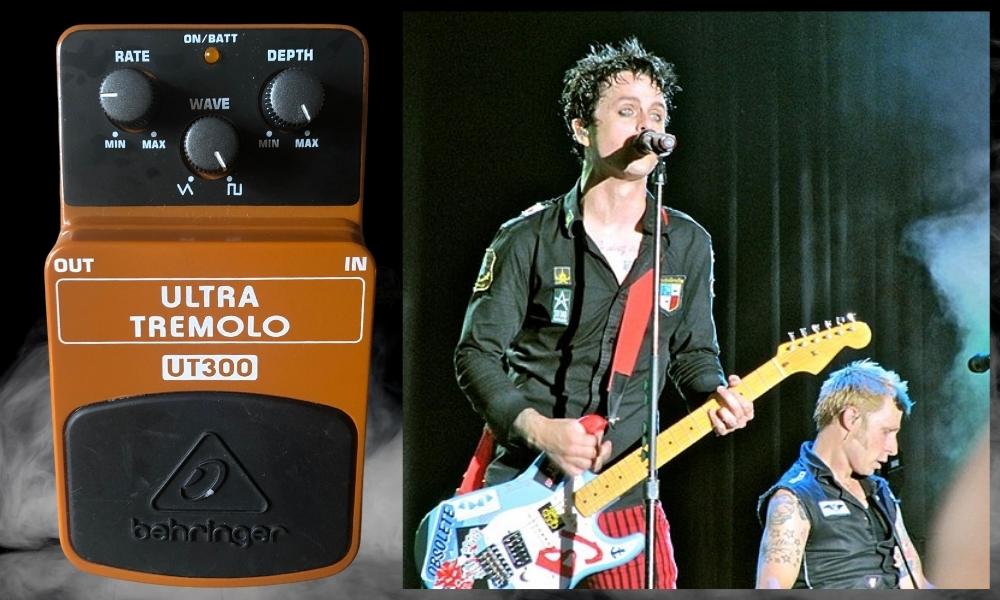
What’s nice is that you don’t need to spend much to replicate the tremolo tone. To get the sound for the introductory guitar riff in “Boulevard of Broken Dreams,” all you really need is a tremolo pedal, a distortion pedal, and of course, your guitar and amplifier. The same thing goes or “How Soon is Now.”
Generally speaking, modern guitar amplifiers already have distortion or drive options right on them, so you should be ok in that regard.
Additionally, if you have a DAW like GarageBand on your computer, you can just use a guitar amp simulator. Many of these effects are available in tools like Blue Cat Audio’s Axiom whose free trial you get from their website.
My article on connecting your guitar to GarageBand and the best guitar plugins for GarageBand will help you get a handle on all that if you don’t actually have an amplifier or you would rather just use your computer.
If you don’t have a Mac computer, Bandlab will work just fine and Blue Cat Audio’s Axiom will work for it as well. Let’s talk about the tremolo pedal that you need first because it’s the most important thing.
1) Tremolo Pedal – Behringer UT300
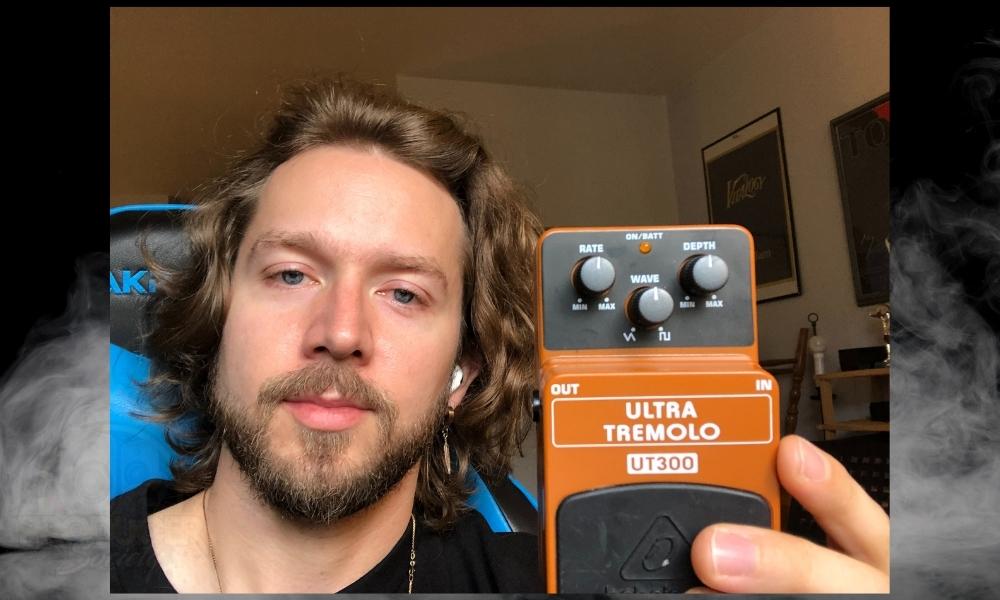
The UT300 is a basic tremolo pedal that works great for getting the sounds that you’re looking for. However, if you wanted a better and more reliable tremolo pedal, the BOSS TR-2 would be a superior choice.
As I explained in my guide to tremolo pedals, they all usually have at least 3 functions. And those are the rate (speed of the tremolo effect), wave (the shape of the waveform), and depth (the intensity of the effect).
Some of them just have different names for these parameters. For that reason, almost any tremolo pedal will work just fine to get the “Boulevard of Broken Dreams” sound you’re looking for. The next thing you need is distortion.
2) Distortion/Drive – Line 6 M5 Stompbox Modeler
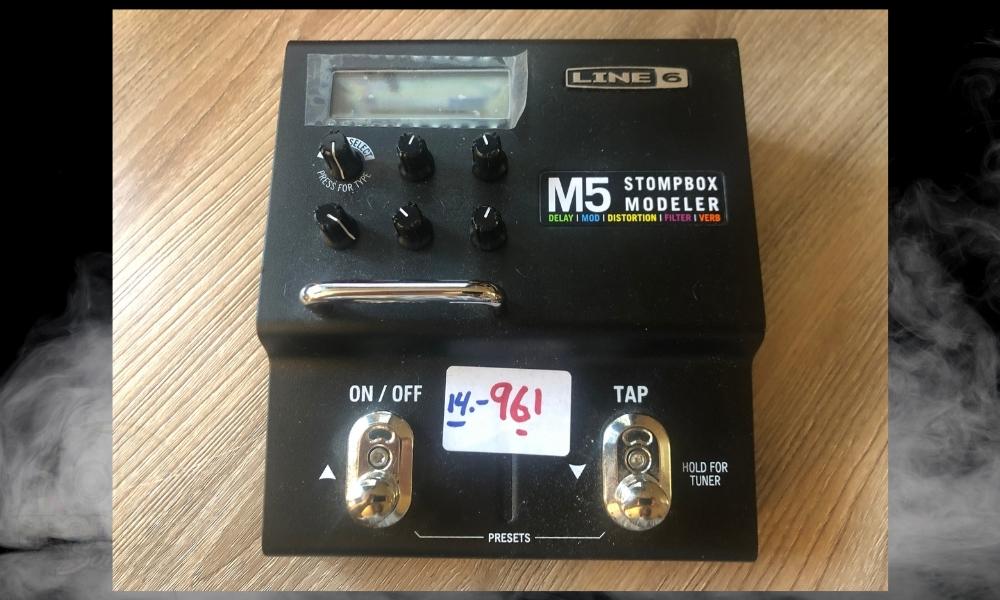
I got the Line 6 M5 Stompbox Modeler from the same auction where I got the Behringer UT300 and it’s a pretty nifty little unit.
It has all kinds of modulation, time-based, distortion, and other pedal effects, including tremolo. I’ll be using it for the distortion though for this tutorial. When paired with an expression pedal like the M-Audio EX-P, it winds up being a pretty useful tool.
The Guitar Tremolo Setting for “Boulevard of Broken Dreams”
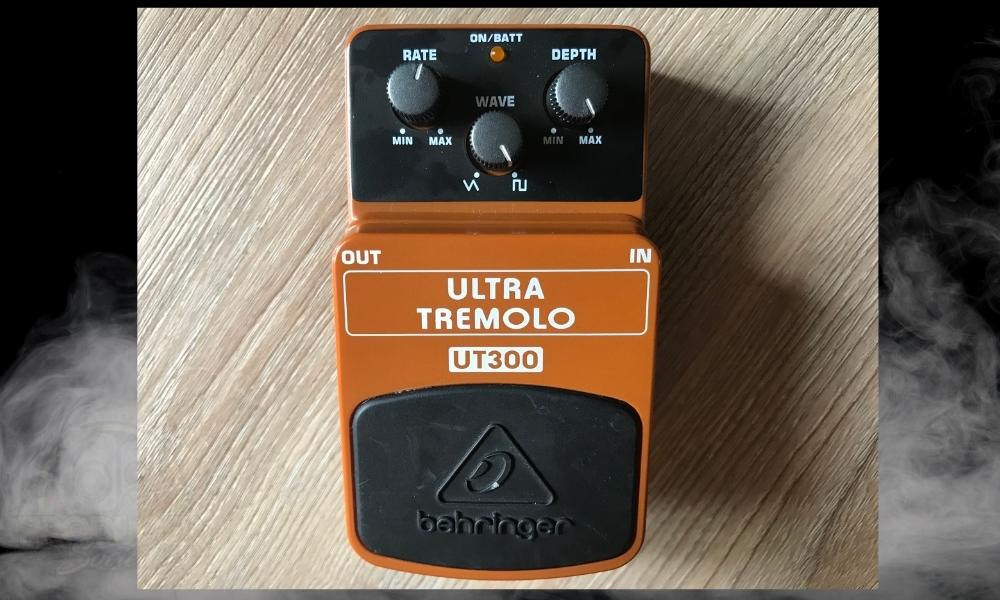
Rate
1/16 Notes
“Boulevard of Broken Dreams” has a tempo of approximately 84BPM so if you want to get the tremolo sound, I think you should aim for 1/16 notes. If you want to know what 1/16th notes sound like at 84BPM, check out this YouTube video.
Compare and contrast that setting to the actual song which you can find on YouTube down here. You’ll notice that the 1/16th notes sound just about right.
However, I find it’s actually fairly difficult to dial in a 1/16th note setting exactly with the UT300 Tremolo pedal. If you can find one that actually has a note division setting, rather than just a vague dial, you’d probably be better off.
Another way of getting a tremolo sound, and a more accurate rate for that tremolo sound, is to use the tremolo in GarageBand or Logic Pro X.
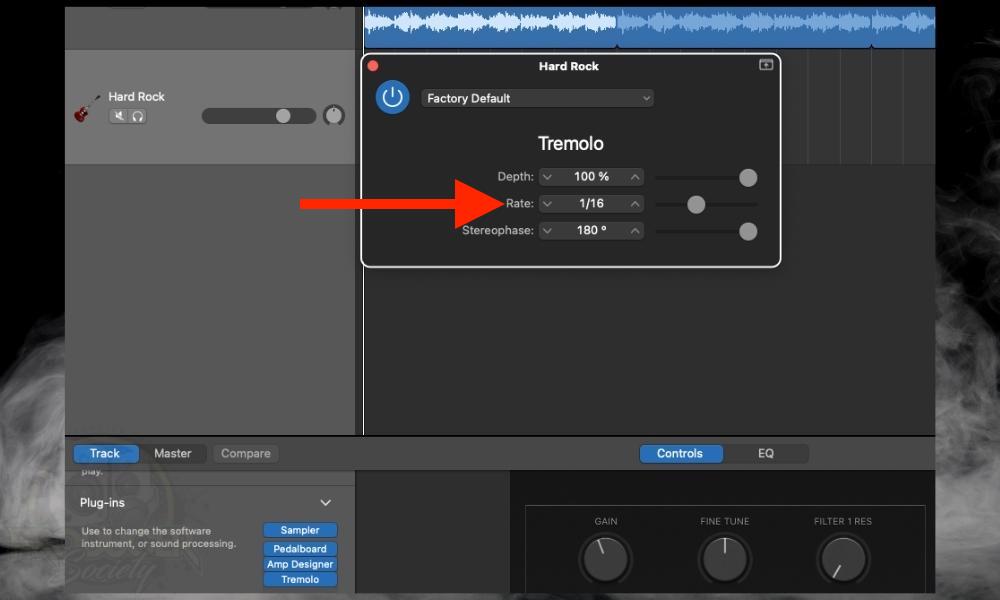
Most DAWs will have their own tremolo, but I know the one in GarageBand has a rate setting that you can adjust either with a slider or in exact time divisions.
This will remove the guessing game that’s a common problem with tremolo pedals. On the other hand, there are some tremolo pedals that have a tap-tempo button where you can set the rate manually. That’s another possible solution.
Depth
Maximum
As I said to your earlier, the depth adjusts how strong the tremolo effect is. And the tremolo effect on “Boulevard of Broken Dreams” is really strong and abrupt. It’s probably best to just crank the depth to the maximum or at least very close to it.
Wave
Square Wave
And finally, you have the waveform. As I explained in my guide to the “Gimme Shelter” tremolo setting, a square wave is going to sound a lot more abrupt, with more peaks and valleys, more starts and stops, than a sine-wave tremolo.
A sine-wave tremolo tends to sound much smoother and more syrupy, so it fits “Gimme Shelter” from Rolling Stones, for example, a lot better. Square-wave is the best choice for “Boulevard of Broken Dreams.”
Where to Put The Tremolo In Your Signal Chain
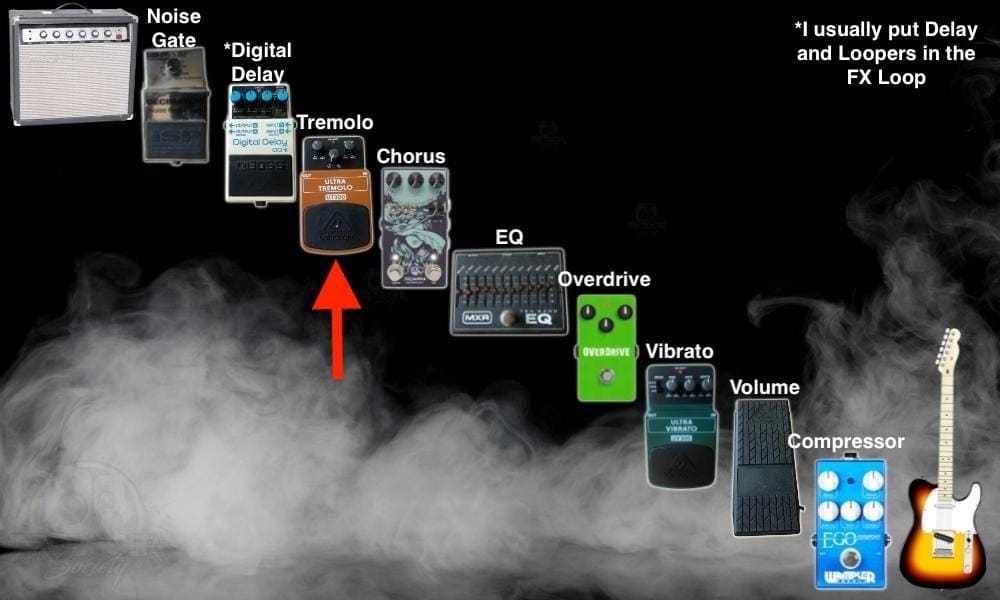
In other words, you want your signal chain to go as follows:
Amp > Tremolo Pedal > Distortion Pedal > Guitar
If you try putting the distortion pedal after the tremolo pedal with the guitar as the starting point, it won’t sound the way you want it to.
It’ll fail to get that abrupt square-wave tremolo sound that Billie has on the song. It might even sound a bit messy.
The Distortion Pedal Setting of “Boulevard of Broken Dreams”
What settings you use depends on whether you’re using a distortion pedal, an overdrive pedal, or the drive that comes on your amp. The truth is that you can get a tone that’s pretty close regardless of which one you use.
Drive
1/4 to Max
You don’t want too much distortion, gain, or drive in your tone. Because it’s not like it’s a metal song. You want just enough drive so that you get the gritty guitar sound, but without making it so messy that the tremolo pedal makes a mess of it.
Treble
1/2 to Max
Set the treble setting to around halfway on your device and see how that sounds.
Bass
2/3 to Max
Give the pedal enough bass, around 2/3 to the max, so you don’t get a tinny-guitar sound that’s thin and weak.
And that’s it for getting the tremolo setting that’s heard throughout “Boulevard of Broken Dreams.” Because of the song’s popularity, you can find all kinds of YouTube videos on how to play it. I think this one from GuitarZero2Hero is probably the best.
Other Articles You May Be Interested In
- How to Use A Volume Pedal As An Expression Pedal [SIMPLE]
- How to Use A Vibrato Pedal [An Illustrated Tutorial]
- How to Use A Noise Gate/Suppressor Pedal [Dead Simple]
- The Ultimate Troubleshooting Guide to Guitar Pedals [EASY]
- Batteries in Guitar Pedals vs Power Supply – Which Is Better

Important Things to Note About “Boulevard of Broken Dreams”
1) The Settings Will Vary Based On Your Gear
What settings you use on your device, particularly the distortion will vary. It’ll also depend on the guitar and amplifier that you use. Different guitars have different sounds because they’re heavier or lighter in certain frequencies.
And the same thing goes for amps. With the tremolo pedal, however, the settings should be fairly similar in principle regardless of the kind of tremolo device you’re using.

 Written By :
Written By :

Hi Andrew — I found an additional ‘trick’ to nail the tremolo sound when playing live: The tremolo intro (and throughout the song) is a studio effect; the recording was modified in the studio to synchronize the tremolo to a click track tempo (according to Green Day producer, Rob Cavallo). This is difficult to do live unless you have a click track and a way to synchronize the click to your tremolo effect. I have solved this problem for our band by using a click track played by Ableton Live and an effects loop that contains Deskew GigPerformer where the synchronized tremolo effect plugin is installed (I use the SoundToys Tremolator and Decapitator). The click track audio is fed to our in-ear monitors so everyone stays on the click. Ableton’s tempo is synchronized to GigPerformer (via the LINK function) and in turn to the containing plugins. I am able to send my guitar signal (via a stereo effects loop with a physical MOTU interface) to GigPerformer’s audio I/O which contains the synchronized tremolo effect. The processed output is sent back via the stereo effects loop. I can ensure whenever I switch in the tremolo effect it will always be on tempo and synchronized to the click. I use GigPerformer (no affiliation) in my effects loop for many ‘hard-to-reproduce-live’ effects.
Yeah, that tremolo effect is pretty hard to nail isn’t it? It’s crazy how much work it is to emulate the sound live. By the way, you win Comment of the Day for the information/experience there. Thanks for sharing.